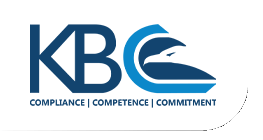By Louise Woodburn, General Manager of KBC Risk Solutions, a Division of KBC Health & Safety
Promoting a workplace attitude that prioritises safety requires a commitment to continuous learning, and by fostering a culture of ongoing education, businesses can proactively address their safety risks. Using emerging technologies and trends, companies can also equip employees with training and knowledge retention strategies that empower them to effectively handle safety concerns and uphold a safe working environment. To successfully shift employee behaviour and gear their mindsets towards safety, organisations must adopt a top-down approach. This involves ensuring that the leadership group is aligned with the thinking and committed to promoting a culture of safety. This requires continuous learning at all levels and is much easier for businesses to achieve when they partner with an experienced, reliable Occupational Health and Safety (OHS) service provider.
End the conflict: safety and production
Continuous learning is critical to ensure that workers develop a sustainable habit of awareness in their roles and responsibilities to maintain a job safely. When frequent training is involved, it becomes habitual to work safely. Given human nature, if safety becomes habitual, it becomes easier to create a safe production environment, instead of an environment in which safety conflicts with production. Organisations that invest in facilitating the ongoing growth of their employees through continuous learning, fuel their enterprise’s ability to dynamically transform as necessary, to anticipate and exploit opportunities as they arise. Safety creates a competitive advantage in that the business can move forward confidently, knowing its risks are minimised.
Digitising the effectiveness of continuous learning
Technology can be used to enhance the employee’s awareness of the dangers in the work environment while increasing the speed of communication between teams. Technology also brings safety into environments that were previously hard to access, thanks to remote working capabilities. Consider the Virtual Safety Officer (VSO), who allows teams to access advisory services without needing a person physically on site. Technology also takes continuous learning outside the training classroom, extending the learning environment through digital formats. From online training and virtual assessments with a facilitator to accessing contextual hazard guides and safety refreshers within the working environment by scanning a QR code, for example.
Reinforcing learning for knowledge retention
The most important thing for businesses to come to grips with is the fact that safety matters. It must not be an afterthought. If management and employees fail to understand that safety matters, then instead of prioritising safe production, their workplace devolves into a conflict zone that pits production against safety. As such, it is essential for any business with a health and safety risk to keep reminding their people of the dangers faced in the workplace regularly, and the importance of acting to ensure that everyone returns to their loved ones at the end of each day. For this messaging to be effective, we must utilise different strategies and consider different individual learning styles when delivering the initial information and following up with refreshers. By ensuring that the message of safety catches the attention of every person, at every turn, we can make safety an immersive part of that workplace culture.
A top-down approach to safety
By focusing on the upskilling of managers, the company can ensure that its managers appreciate the importance of safety and make it a social component of the business itself. When people keep learning, they keep growing. While there is room for mistakes in such a continuous learning cycle, mistakes must become lessons and they must be used for growth and improvement.
Tailoring relevance in safety
Communication, collaboration, and feedback on all levels is non-negotiable within continuous learning environments. Additionally, we must increase our awareness of safety, while narrowing our focus on relevance and cooperation. Instead of having a checklist for production and a checklist for safety, it is more effective to find ways to combine the two so that it becomes part of the same culture. Ensuring relevance at all times is highly critical – there is no need for reams of documentation with endless rules that are not industry-specific or pertinent to the risks at hand. This necessitates a tailored approach to documentation that covers the right Personal Protective Equipment (PPE) in the right processes with the right training, which is the only way to guarantee that the safety system is relevant to those people in that business.
Profiting from safety
A positive safety culture is invaluable. It cannot be emphasised enough that a company with a safety-first work culture is a company that has fewer incidents and accidents because people are more aware of the risks they are encountering daily. Shifting the risk perception of people is hugely beneficial and an experienced OHS service provider can make all the difference in achieving this shift with relevant, customised safety training programmes. The more prepared people are to address risk, the more adaptable they are to change. Adaptability is the key ingredient for innovation and productivity, which in turn unlocks greater profitability through safety.



